|
|
Home →
Survival →
Fire →
Fire Pistons
Fire Pistons - An
Introduction
Article and Photos by Rob
Bicevskis
|
|
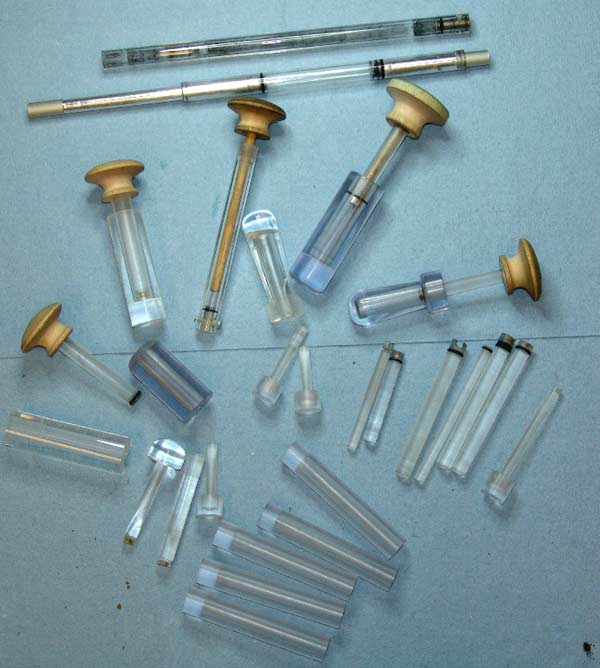
Various Experimental Fire Pistons |
|
|
A while back, I posted an
article on some experiments that I had done in the building of
fire pistons:
Some Thoughts
on Fire Pistons
Of course, since most people have never heard of a fire piston -
the article was only valuable to a narrow group of people.
Everyone else went: "huh?" If you're a "huh" person, read
on.
If you want to build a fire piston, please check out
Model T Fire Piston. |
| |
| What is a Fire Piston? |
| |
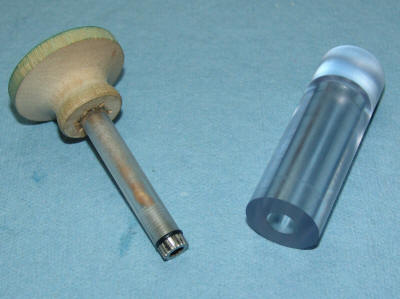 |
A fire piston
is a really neat method of generating a "coal" which
can be used to light a fire. It is a very
simple device that consists of two parts, a plunger
and cylinder. The cylinder is nothing more than a
piece of material that has had a hole bored part way
into it. The plunger is made to fit into the
hole in the cylinder. The plunger has a small
hole in the end. This contains a piece of
tinder - the stuff that we want to light. The
plunger also has some sort of gasket near its tip.
This gasket makes an air-tight seal with the
cylinder. A bit of physics: PV=nRT
This formula basically says that Pressure, Volume
and Temperature are closely related. As we
decrease volume, pressure goes up, and so does
temperature. As we rapidly press the plunger
into the cylinder, we can generate a sufficiently
high pressure, and more importantly, temperature, to
light our tinder. |
|
| |
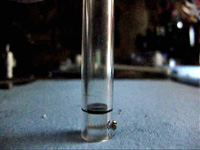 |
Sound
impossible? Check out
this
video of a fire-piston in action. By the way -
this is almost exactly the same process that occurs
in a diesel engine. Another example of a
principle that we think of as being "modern" but
whose application was recognized long ago! You can
also check out this page
to see another fire piston design and can view a
video which shows a coal being produced. |
|
| |
| Types of Fire Pistons |
| |
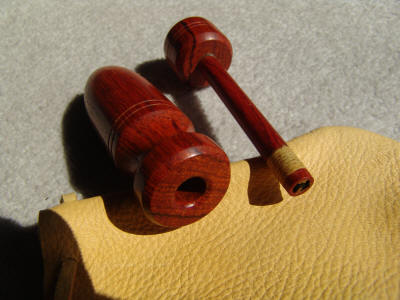 |
The photos
above show fire pistons made from various types of
plastics. This was done to enable better
experimentation and visibility into the process that
occurs. Originally, fire pistons were made of bamboo.
This provided a ready-made cylinder with one end
sealed.
This picture shows a wooden fire piston
made by Jeff Wagner. Note that in this case
the plunger gasket is made from string. |
|
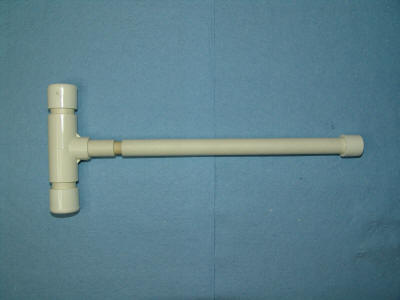 |
Here is a
fire piston made of PVC plumbing pipe. |
|
| |
| Construction Details |
| |
| |
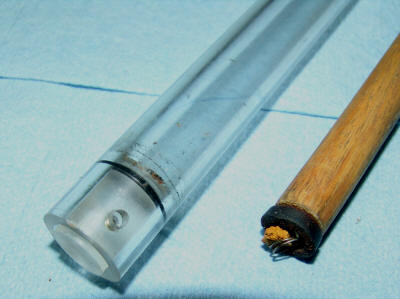 |
There are two critical items in the
construction of a fire piston: the cylinder
bore, and the gasket on the plunger. The cylinder
bore needs to be straight, smooth and as consistent
in diameter as possible. The plunger needs an
air-tight gasket that seals well, but presents a
minimum amount of friction. This picture shows one
building technique. The cylinder is made from plastic tubing.
One end is sealed with a piece of plastic rod. The rod can be
sealed to the
tubing with glue, or in this case with an O-ring.
The hole that is shown accepts a screw which keeps
the plug in place. This is the fire piston that
was used in the above video clip.
|
|
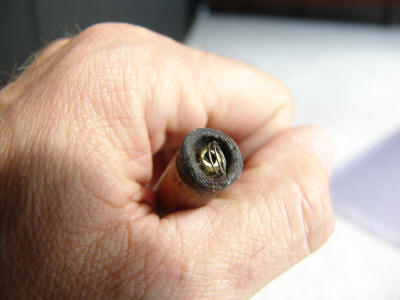 |
Here is a close-up of the plunger end.
This design used a leather "cup" as a seal. The leather cup is
screwed into the end of the plunger. The screw
also fastens a few coils from a spring to the end of
the plunger. This is a convenient way to hold
the tinder. |
|
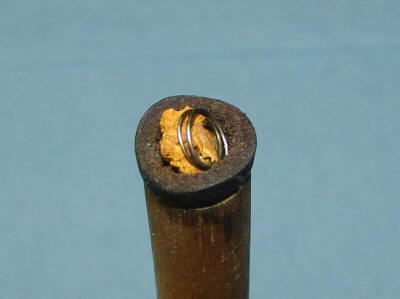 |
Another
view of the plunger end loaded with tinder fungus. |
|
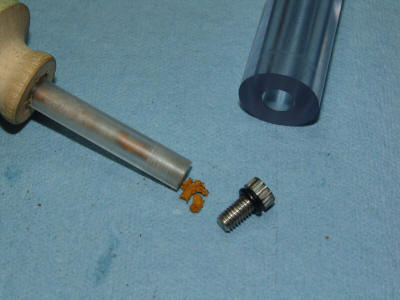 |
Here is
another fire piston design. The cylinder is a piece of polycarbonate rod with
a hole bored into one end.
The plunger is another piece of polycarbonate
that is also bored out. The hole in the
plunger is used as a holding area for tinder pieces.
The end of the plunger is sealed with a screw and
O-ring. Adjusting the tension on the screw allows
one to squeeze the O-ring to get the perfect
trade-off between gasket friction vs. air-tightness. |
|
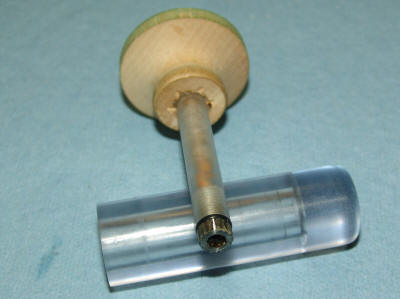 |
Another view
with the plunger assembled and ready to go. |
|
|
|
| Variations |
| |
Have another
look at this picture (below) and some other variations.
The very top fire piston uses a very long narrow
bore - this gives lots of pressure and heat.
The next model down is a dual-ended fire piston.
Instead of permanently sealing one end of the
cylinder, two plungers are used.
The other pictures show minor variations in bore
sizes and plunger sizes and materials. |
|
 |
| |
Hopefully this page has provided a brief overview
into fire pistons. For some more in-depth
information, check out
Some Thoughts
on Fire Pistons.
There are many different materials, construction
techniques and operating tips that can provide for a
wide range of variations. Let me know the
results of your experiments:
email Rob
|
|
|
|
|